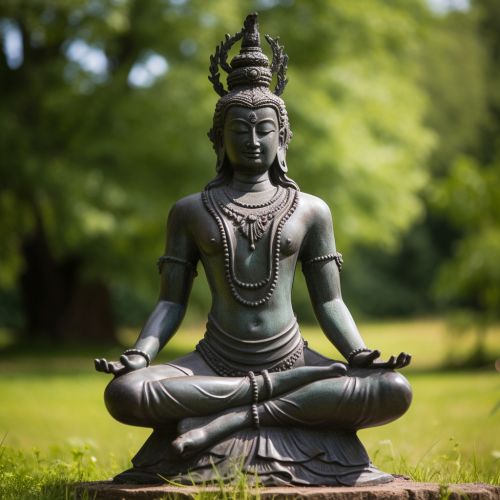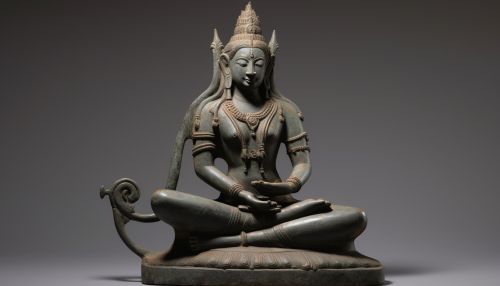Shiva
Origins and History
Shiva is one of the principal deities in Hinduism, a major world religion originating from the Indian subcontinent. He is part of the holy trinity of Hindu gods, which also includes Brahma and Vishnu. Shiva is often referred to as the "destroyer" within this trinity, but his role is more complex, encompassing themes of destruction, regeneration, and liberation.
The origins of Shiva are complex and multifaceted, with roots in the prehistoric Indus Valley Civilization. Some scholars suggest that the enigmatic 'Pashupati' seal discovered at the Indus Valley sites depicts an early prototype of Shiva. However, the deity as we understand him today evolved over many centuries, incorporating elements from various cultural and religious traditions.


Iconography and Symbolism
Shiva is depicted in various forms in Hindu iconography. One of the most common is as a meditating yogi, seated in a lotus position, with his eyes half-closed in deep meditation. He is also often depicted with a third eye on his forehead, which symbolizes spiritual wisdom and power. Another common depiction is Shiva as Nataraja, the lord of dance, performing the cosmic dance of creation, preservation, and destruction.
Shiva is also associated with several symbols. The trident, or trishula, is a weapon that represents his three fundamental powers (iccha, kriya, and jnana - will, action, and knowledge). The damaru, a small drum, symbolizes the sound of creation. The serpent around his neck represents the power of kundalini, the divine force thought to reside within every individual.
Worship and Festivals
Shiva is worshipped across India and Nepal, as well as in Hindu communities worldwide. His worship involves the offering of flowers, leaves, and milk, and the chanting of mantras, particularly the powerful 'Om Namah Shivaya'. Shiva is also the deity to whom the ascetic yogis, or sadhus, are devoted, often emulating his meditative and ascetic practices.
Several Hindu festivals are dedicated to Shiva. The most significant of these is Maha Shivaratri, a night of vigil and fasting in honor of Shiva. During this festival, devotees stay awake all night, chanting prayers and performing rituals. Another important festival is the annual 'Kumbh Mela', where millions of devotees gather for a ritual bath in the holy rivers, a practice believed to cleanse sins and bestow blessings.
Shiva in Philosophy and Literature
In Hindu philosophy, particularly in the school of Advaita Vedanta, Shiva is identified with the supreme reality or Brahman. This philosophical perspective views Shiva not just as a personal deity, but as a symbol of the ultimate truth beyond form and duality.
Shiva also features prominently in Hindu literature. In the epic poems Mahabharata and Ramayana, he is invoked by heroes for blessings and guidance. In the Puranas, a genre of ancient Indian scriptures, the exploits and teachings of Shiva are narrated in great detail.
